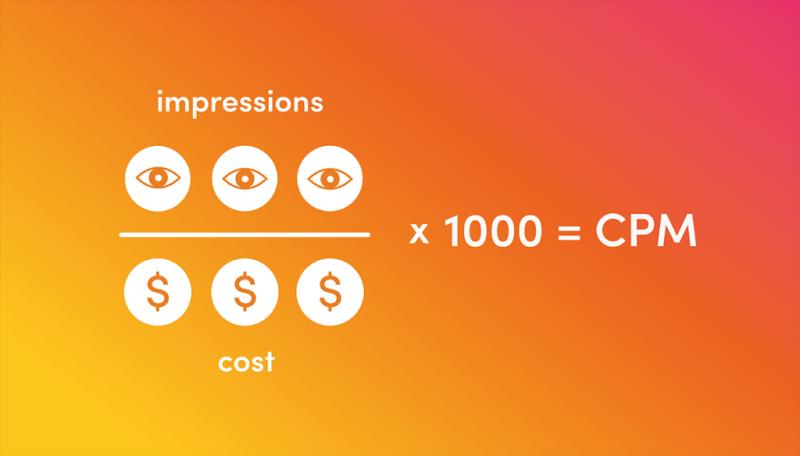How to calculate cost per thousand?
Cost Per Thousand (CPM) is a common metric used in advertising to measure the cost of 1,000 impressions or views of an advertisement. The formula for calculating CPM is:
Here's a step-by-step guide on how to calculate Cost Per Thousand:
Determine the Cost: Find out how much you spent on the advertising campaign. This could be the total cost of placing the ad, production costs, and any other related expenses.
Determine the Number of Impressions: Calculate the total number of times the ad was displayed or viewed. Impressions represent the exposure of the ad to potential viewers.
Apply the Formula: Use the formula mentioned above to calculate CPM. Divide the total cost by the number of impressions, and then multiply the result by 1000 to get the cost per thousand impressions.
For example, if you spent $500 on an ad campaign that generated 100,000 impressions, the CPM would be calculated as follows:
So, in this case, the Cost Per Thousand impressions is $5.
Keep in mind that CPM is a useful metric for comparing the relative cost-effectiveness of different advertising channels or campaigns, especially in the context of display advertising or online platforms.
Mastering the Art of Cost per Thousand Calculation
Cost per thousand (CPM) is a crucial metric in advertising, representing the cost of reaching 1,000 impressions. Understanding and mastering its calculation is essential for optimizing your advertising campaigns. Here's a breakdown:
A. Definition:
- CPM stands for Cost per Mille, with "Mille" being the Latin word for thousand.
- It measures the cost of reaching 1,000 potential customers with your ad.
B. Calculation:
- Formula: CPM = (Total Ad Spend / Number of Impressions) x 1,000
- Example: If you spend $100 and receive 50,000 impressions, your CPM would be $2.
C. Importance:
- CPM helps compare the cost-effectiveness of different advertising channels and campaigns.
- It allows you to allocate your budget efficiently by focusing on channels with the best reach at the lowest cost.
D. Mastering the Art:
- Go beyond basic CPM: Consider viewable CPM (vCPM) which focuses on impressions actually seen by users.
- Analyze CPM trends: Track fluctuations over time to identify patterns and optimize spend.
- Benchmark against industry averages: Understand your CPM performance compared to similar businesses.
What is CPM and how is it calculated in advertising?
CPM (Cost per Mille) is a metric used in advertising to measure the cost of reaching 1,000 impressions of your ad. It essentially tells you how much you pay for each thousand potential views your ad receives.
Calculation:
- Total Ad Spend: This is the amount you spend on your advertising campaign.
- Number of Impressions: This is the total number of times your ad is displayed, regardless of whether it's actually seen by users.
Formula: CPM = (Total Ad Spend / Number of Impressions) x 1,000
Example: Imagine you spend $50 and your ad generates 25,000 impressions. Your CPM would be:
CPM = ($50 / 25,000) x 1,000 = $2
This means it costs you $2 to reach every 1,000 potential customers with your ad.
Additional Notes:
- CPM is commonly used for display advertising, where ads are displayed on websites or apps.
- CPM can vary greatly depending on factors like target audience, ad format, and platform.
How to optimize advertising strategies based on cost per thousand metrics?
Using CPM effectively can significantly improve your advertising campaigns' efficiency and results. Here are some strategies:
A. Analyze CPM data:
- Track CPM trends: Monitor changes over time to identify patterns and potential optimization areas.
- Compare CPM across channels: See which platforms offer the best reach at the lowest cost.
- Benchmark against industry averages: Understand how your CPM performance compares to others in your field.
B. Optimize targeting:
- Refine your target audience: Ensure your ads reach the right people, leading to higher engagement and lower CPM.
- Utilize exclusion targeting: Exclude demographics or interests unlikely to convert, reducing wasted impressions.
- Test different targeting options: Experiment with various targeting parameters to find the most effective combination.
C. Improve ad quality:
- A/B test different ad creatives: Find the ad formats and messaging that resonate best with your audience.
- Focus on ad relevance: Ensure your ads match the platform and content where they appear, increasing engagement.
- Optimize landing pages: Create landing pages that provide a seamless user experience, leading to conversions.
D. Bidding strategies:
- Manual bidding: Set CPM bids yourself based on your budget and campaign goals.
- Automatic bidding: Utilize platform algorithms to optimize bids for clicks or conversions.
- Experiment with different bidding strategies: Find the approach that best aligns with your campaign objectives.
E. Continuous monitoring and adjustments:
- Regularly monitor your campaign performance and analyze data to identify areas for improvement.
- Make adjustments based on your findings, optimizing targeting, ad formats, and bidding strategies.
- Remember, advertising is an ongoing process. Continuously test and refine your approach for optimal results.
By effectively using CPM data and implementing these optimization strategies, you can significantly improve the reach, efficiency, and return on investment of your advertising campaigns.












